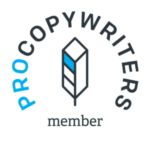What a style guide includes
Never seen a style guide before? To get a sense of what a style guide can look like, browse the Guardian/Observer and the Economist style guides for starters.
You probably won’t want anything as detailed as these – but they’re a good insight into how helpful a style guide can be for a serious content team.
Your style guide will focus on issues that are important to you. These might include:
- Brand tone. Do you want writers to use short, snappy sentences and paragraphs – or vary the pace? Are you a minimalist brand – or is a dash of creative flair OK by you? A summary of your views on tone of voice should appear here.
- Styles of English. In a global business, do you use UK or US spellings? Are there any exceptions to the general rule – such as use of the Oxford comma?
- Industry terms. Are there words that are always spelled the same way in your industry – or ugly phrases that you never want to use?
- Hyphenations. Do you take a progressive approach to hyphenation, using one-word nouns like “mashup” and “breakup” – or are you a bit more traditional, preferring hyphenated forms?
- Abbreviations. Do your readers know their ASOS from their ASCII? Which do readers understand, and which should be spelled out at first mention?
- Basic grammar rules. Not everyone who writes for your business will be an experienced writer. Do you want to include basic grammar rules for them to stick to – or assume that writers don’t need this?
- Old-school grammar rules. Do you enforce once-popular rules such as ‘don’t split infinitives’ or ‘never begin a sentence with “And”’? (Most people think these two have died a death, but in a highly conservative market, you might not.)
- References and citations. In reports and white papers, references matter: they give you credibility and reinforce your expertise. But do you have a consistent way to present references, so your readers can read up on a subject further if they need to? A style guide helps nail these down.
Each one of these decisions might seem small in themselves – but taken together, they can be vital to achieving consistency. And consistency, as you know, plays a vital role in building a brand.
So if you don’t have a style guide, and you believe in clear comms, you know what to do. Get in touch – and start work on your style guide today.

